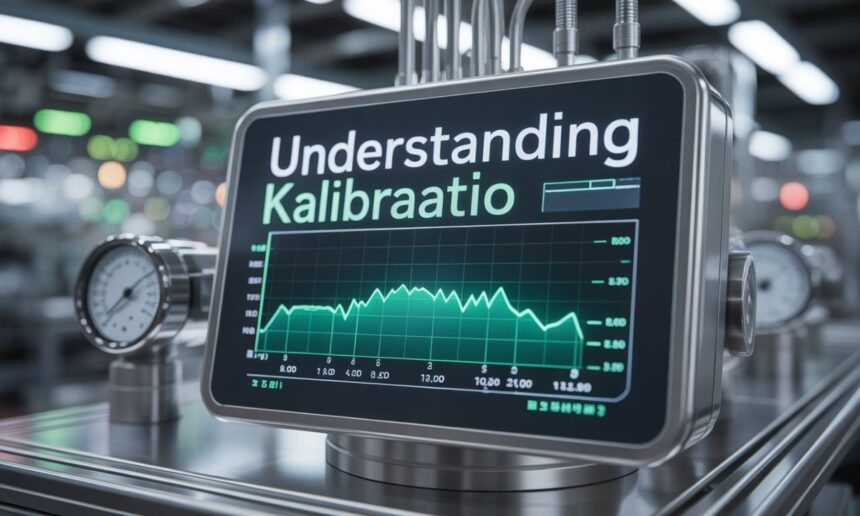Kalibraatio, the Finnish word for calibration, plays a crucial role in science, engineering, healthcare, and everyday industries. It refers to the process of comparing measurement instruments against a standard reference to ensure accuracy and reliability. From medical devices to manufacturing tools, calibration guarantees that results are trustworthy and consistent.
In today’s fast-paced, technology-driven world, kalibraatio ensures precision, safety, and compliance across multiple sectors. This article provides a comprehensive deep dive into its meaning, methods, applications, benefits, and future trends.
What is Kalibraatio?
Kalibraatio is the process of aligning an instrument’s measurement accuracy with an established standard. When instruments are used over time, environmental conditions and wear can cause inaccuracies. Calibration detects and corrects these deviations.
For example:
- A thermometer may start showing slightly higher or lower temperatures over time.
- A weighing scale could lose accuracy after years of use.
Through calibration, these tools are adjusted to match the true standard, ensuring that measurements remain precise.
Why Kalibraatio is Essential
Calibration is not just about fine-tuning; it’s about trust and reliability. Industries and individuals depend on accurate data to make informed decisions. Without calibration, results could be misleading and even dangerous.
- In healthcare, inaccurate medical equipment could lead to misdiagnosis.
- In aviation, faulty instrument readings could endanger passengers.
- In manufacturing, incorrect calibration may result in defective products.
Thus, kalibraatio ensures safety, efficiency, and compliance with industry standards.
Key Principles of Kalibraatio
The process of calibration is guided by certain universal principles:
- Traceability: Instruments must be compared against internationally recognized standards.
- Accuracy: The goal is to minimize measurement error.
- Repeatability: Measurements should be consistent across repeated tests.
- Uncertainty estimation: Every calibration comes with a margin of possible error, which must be documented.
- Documentation: Results must be recorded for compliance and future reference.
These principles ensure that calibration meets scientific and industrial reliability standards.
Types of Kalibraatio
1. Mechanical Calibration
Applies to tools like calipers, micrometers, and gauges. It ensures that physical dimensions are measured correctly.
2. Electrical Calibration
Used for devices such as multimeters, oscilloscopes, and power meters. It verifies the accuracy of electrical measurements like voltage and current.
3. Thermal Calibration
Applies to thermometers, temperature sensors, and climate chambers. This ensures correct monitoring of temperature-sensitive environments.
4. Pressure and Flow Calibration
Critical in industries like oil, gas, and aviation where precise pressure and flow measurement is vital.
5. Chemical Calibration
Used in laboratories for pH meters, gas analyzers, and spectrophotometers. It ensures correct chemical composition readings.
The Kalibraatio Process
Calibration is not random—it follows a structured process:
- Preparation – Selecting reference standards and conditions.
- Measurement – Comparing the instrument against the reference.
- Adjustment – Correcting deviations to align results.
- Verification – Re-testing to confirm accuracy.
- Documentation – Recording data in calibration certificates.
This systematic approach ensures repeatability and compliance.
Benefits of Kalibraatio
Calibration offers wide-ranging benefits across industries:
- Accuracy in measurement – Ensures dependable results.
- Cost savings – Prevents losses due to errors or defective products.
- Regulatory compliance – Meets international and industry-specific standards.
- Extended equipment life – Maintains tools in peak condition.
- Risk reduction – Minimizes accidents and product recalls.
In short, calibration enhances trust, efficiency, and quality assurance.
Kalibraatio in Different Industries
1. Healthcare and Medicine
Medical devices like blood pressure monitors, ventilators, and MRI scanners must be calibrated regularly to ensure accurate diagnosis and safe treatment.
2. Manufacturing and Engineering
Precision tools, assembly lines, and robots require calibration for efficiency and product quality. Even a minor error could cause large-scale production issues.
3. Aviation and Transportation
Aircraft instruments, navigation systems, and vehicle sensors depend on calibration for passenger safety and regulatory approval.
4. Energy and Utilities
Power plants, oil rigs, and renewable energy sectors rely on calibrated tools for efficiency, safety, and sustainability.
5. Education and Research
Universities and laboratories use calibration to ensure experiments and research data remain reliable and reproducible.
Common Challenges in Kalibraatio
Although calibration is vital, it faces some challenges:
- Cost: High-quality calibration services can be expensive.
- Time: Downtime during calibration may disrupt operations.
- Skill requirement: Expert technicians are needed for precise results.
- Environmental factors: Temperature, humidity, and vibration can affect accuracy.
Overcoming these challenges requires proper planning, investment, and regular maintenance schedules.
How to Implement an Effective Kalibraatio Program
Organizations can strengthen their calibration efforts with these steps:
- Develop a schedule – Regular calibration prevents accuracy drift.
- Train staff – Ensure employees understand calibration basics.
- Use accredited labs – Work with ISO-certified facilities.
- Maintain records – Keep detailed calibration certificates for audits.
- Leverage technology – Use software to track calibration schedules and results.
This structured approach ensures long-term reliability and compliance.
Future of Kalibraatio
As technology evolves, calibration is entering a new era.
- AI-powered calibration: Artificial intelligence will enhance precision and reduce human error.
- Remote calibration: Cloud-based tools will allow online tracking and verification.
- Automation: Robots and IoT devices will make continuous calibration possible.
- Green calibration: Eco-friendly methods will reduce waste and energy consumption.
The future of kalibraatio lies in digital integration, automation, and sustainability.
Advantages and Disadvantages of Kalibraatio
Advantages
- Guarantees accuracy and reliability.
- Reduces errors and financial losses.
- Improves safety and compliance.
- Enhances trust in results.
Disadvantages
- Can be costly for small businesses.
- Requires downtime during service.
- Needs expert handling.
- Environmental influences can complicate accuracy.
Despite challenges, the advantages outweigh drawbacks, making calibration indispensable.
Conclusion
Kalibraatio is far more than a technical procedure—it is the backbone of precision, trust, and safety in our modern world. Whether in healthcare, aviation, manufacturing, or scientific research, it ensures that tools and instruments provide accurate, consistent results.
By understanding its principles, benefits, challenges, and future innovations, individuals and organizations can appreciate why calibration is not optional but essential.
In essence, kalibraatio guarantees that the measurements guiding our lives are reliable, safe, and future-ready.







